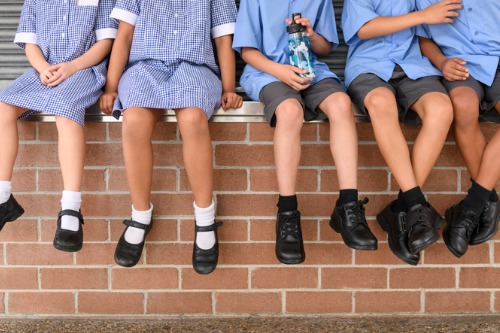
On Wednesday, Prime Minister Scott Morrison released the 12th Closing the Gap report, revealing that Indigenous students' education targets, especially in the areas of school attendance and literacy and numeracy, are not on track.
Closing the Gap began in response to a call for governments to commit to achieving equality for Aboriginal and Torres Strait Islander people in health and life expectancy within a generation.
While some years have shown mixed progress, the latest results show only two of the seven targets are rated as currently “on track”.
They were the target to have 95% of Indigenous four year-olds enrolled in early childhood education by 2025, and the target to halve the gap for Indigenous Australians aged 20–24 in Year 12 attainment or equivalent by 2020.
“Things are better than they were ... but we have not made as much progress as we should have by now,” Morrison said.
“There remains much more to do, and we will do it differently by working together”.
Much of that work, if the report’s findings are anything to go by, will be focussed on education, health and jobs.
‘No improvement’ in school attendance
According to the findings of the report, the majority of Indigenous students attended school for an average of just over 4 days a week in 2019 (these students largely lived in Major Cities and regional areas).
School attendance rates for Indigenous students have not improved over the past five years. Attendance rates for Indigenous students remain lower than for non‑Indigenous students (around 82% compared to 92% in 2019).
Gaps in attendance are evident for Indigenous children as a group from the first year of schooling. The attendance gap widens during secondary school. In 2019, the attendance rate for Indigenous primary school students was 85% -- a gap of around 9 percentage points. By Year 10, Indigenous students attend school 72% of the time on average – a gap of around 17 percentage points.
‘More progress needed’ on literacy and numeracy
At the national level, the share of Indigenous students at or above national minimum standards in reading and numeracy has improved over the past decade to 2018. The gap has narrowed across all year levels by between 3 and 11 percentage points.
Despite these improvements, in 2018 about one in four Indigenous students in Years 5, 7 and 9, and one in five in Year 3, remained below national minimum standards in reading. Between 17-19% of Indigenous students were below the national minimum standards in numeracy.
Looking at students exceeding national minimum standards provides a better understanding of how well Indigenous children are placed to successfully transition to further study or work. Between 2008 and 2018, for example, the share of Year 3 students exceeding the national minimum standard in reading increased by around 20 percentage points.
‘Some progress’ in Year 12 attainment
In 2018–19, around 66% of Indigenous Australians aged 20–24 years had attained Year 12 or equivalent.
Between 2008 and 2018–19, the proportion of Indigenous Australians aged 20–24 years attaining Year 12 or equivalent increased by around 21 percentage points. The gap has narrowed by around 15 percentage points, as non-Indigenous attainment rates have improved at a slower pace.
The biggest improvement in Year 12 attainment rates was in Major Cities, where the gap narrowed by around 20 percentage points—from 26 percentage points in 2012–13 to 6 percentage points in 2018–19.
Areas requiring further progress
The target to halve the gap in child mortality rates by 2018 has seen progress in maternal and child health, although improvements in mortality rates have not been strong enough to meet the target.
The target to halve the gap for Indigenous children in reading, writing and numeracy within a decade (by 2018) has driven improvements in these foundational skills, but more progress is required.
There has not been improvement in school attendance rates to close the gap between Indigenous and non-Indigenous school attendance within five years (by 2018).
The national Indigenous employment rate has remained stable against the target to halve the gap in employment outcomes between Indigenous and non-Indigenous Australians within a decade (by 2018).
However, the target to close the gap in life expectancy by 2031 is not on track.
Later this year, the PM and his state and territory counterparts are expected to ink a formal agreement with peak organisations representing Aboriginal and Torres Strait Islander people. The agreement aims to deliver improvements at a local, regional and national level over the next decade.
The agreement is expected to improve collaboration and cooperation between the government and the Indigenous community across education, business, employment, health and suicide prevention.
Leaders admit mistakes
Speaking in Parliament, Morrison said “we must see the gap we wish to close, not from our viewpoint, but from the viewpoint of Indigenous Australians before we can hope to close it and make a real difference”.
“Closing the Gap has never really been a partnership with Indigenous people,” Morrison told Parliament.
“We perpetuated an ingrained way of thinking passed down over two centuries, or more…and it was a belief that we knew better than our Indigenous peoples – we don’t”.
Opposition Leader Anthony Albanese decried the dismal findings of the report as a failure by politicians – not Indigenous Australians.
“The problem was not that the targets were too ambitious – they were not. They were modest,” he said.
“The failure to meet the targets is our failure – not theirs [Indigenous Australians]”.


